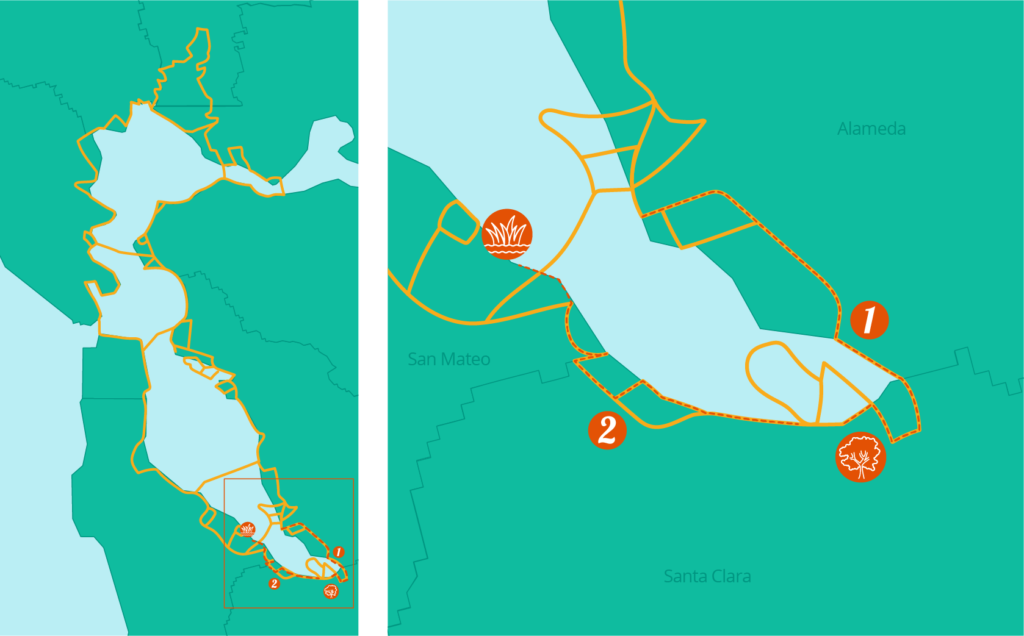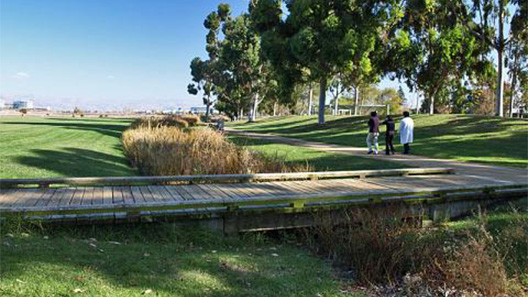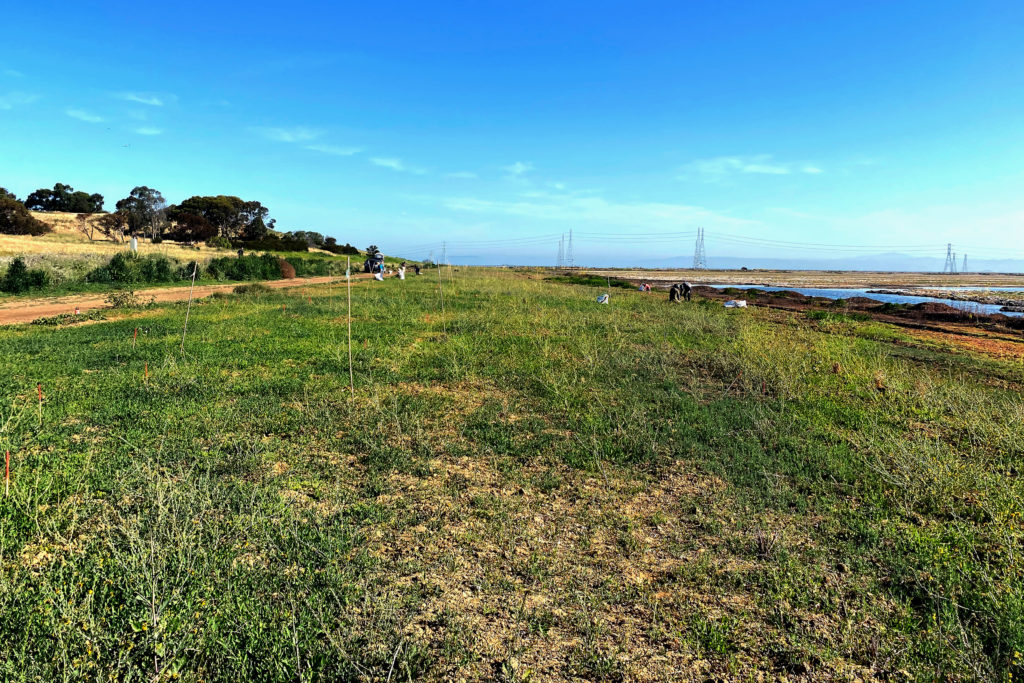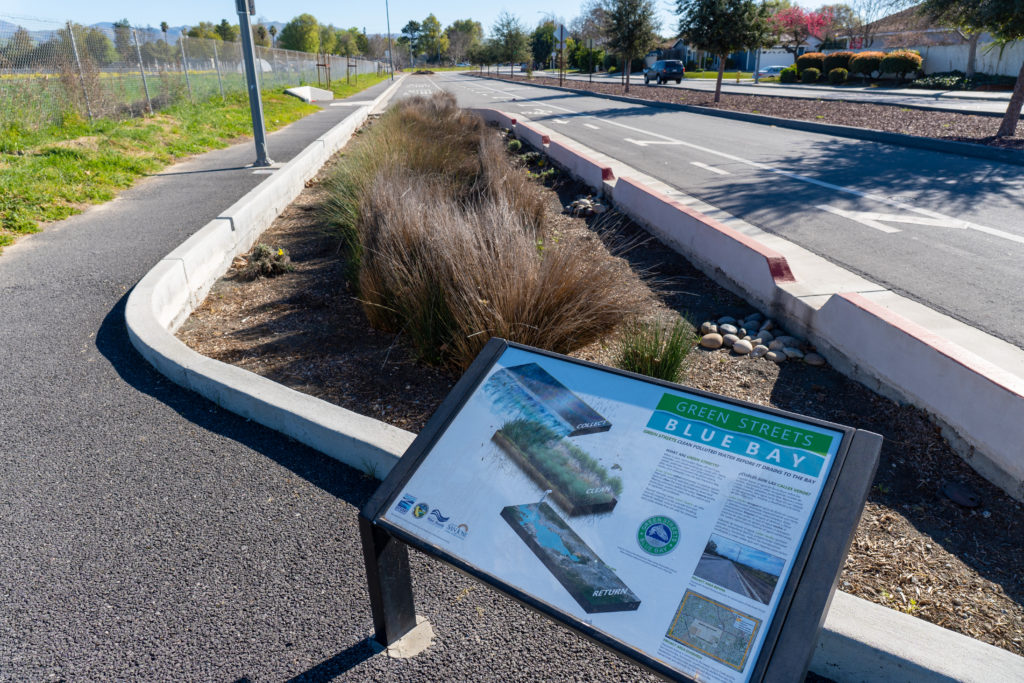Explore the South Bay | Bay Day 2022
You can still sign up to participate in the Bay Day Challenge. Once you’ve completed your outdoor activities or hit the Bay Trail, submit your miles and activities to the Bay Day RunSignUp portal.
Don’t forget to follow us on Instagram and share your adventure with #BayDayChallenge #SFBayDay and tag @saveSFbay for the chance to win a $50 Sports Basement gift card every week.
Bay Day Regional Spotlight

Discovery Guide
Trails
Alviso is a historic waterfront town in the city of San José, located at the southernmost part of the Bay. The former marina has been restored back into wetlands and houses a variety of trails. As you explore you can see wetlands, brackish and freshwater marshes, and salt ponds. The nearby Environmental Education Center off of Grand Boulevard exhibits some interpretative displays of wetland wildlife and has its own 4.5 mile loop trail surrounding a restored salt pond. →
This trail begins at Bedwell Bayfront Park, heading southward into the Don Edwards San Francisco Bay National Wildlife Refuge and finishing at Alviso Marina County Park. From here you can explore the Ravenswood Open Space Preserve, discover the Lucy Evans Baylands Nature Interpretive Center, and visit the nearby Sunnyvale Baylands Park which features seasonal wetlands and grassy uplands that are great for picnicking. →
Activities
Save The Bay’s Habitat Restoration Team is currently monitoring restoration sites. In order to know where to focus our work, we systematically observe our site looking for a variety of species and habitat structures. This process is called monitoring and in this video, we’ll show you what monitoring looks like. Modeling our restoration strategy around the natural processes of these native habitats gives them the best chance for success well into the future.

Picnic at Sunnyvale Baylands Park
Sunnyvale Baylands Park features fields to sit and relax on, playgrounds for the children, and beautiful trails to observe preserved wetlands. Baylands Park provides over seventy acres of developed parkland offering active recreation, pathways and picnic areas for families and large groups. An additional 105 acres of seasonal wetlands is protected as a Wetlands Preserve providing habitat for plants and wildlife.
Large-scale Restoration near Bedwell Bayfront Park

On the southeast side of Bedwell Bayfront Park, Save The Bay is using innovative restoration techniques to create a nature-based solution to flooding and sea level rise. The 9.6 acre Ravenswood horizontal levee project offers a glimpse of what 21st century levees could look like in the Bay Area and beyond. By creating a wide, gently sloping, vegetated buffer of land, horizontal levees help prevent water from moving inland and protect communities from flooding and sea level rise. The restored native habitat will also provide crucial refuge for local wildlife.
For this large-scale project, Save The Bay is combining tried and true restoration methods of planting native species by hand with new strategies that utilize farming equipment to quickly spread rhizomes and seed mixes throughout the area. The Ravenswood horizontal levee is an important evolution in levee design and restoration technology, offering an example of how future shoreline adaptation projects can build resilience against climate change.
With recreational trails connecting to Bedwell Bayfront Park, Ravenswood is an easily accessible site to enjoy nature at the edge of the Bay.
Urban Greening in San José

Chynoweth Street, San José
As climate change intensifies across the globe, Bay Area residents are grappling with the immediate impacts in the form of intense heat waves, unhealthy air quality and more frequent flooding, caused by rising sea levels and erratic weather patterns. For cities in the Bay Area, especially low-lying and shore-adjacent cities like San José, the importance of building climate resilience is becoming increasingly clear.
One of the most effective and transformative methods of building climate resilience is through urban greening. Urban greening incorporates nature back into urban areas, especially in vulnerable communities that have been historically underserved, in order to improve environmental health and community livability. By including features such as rain gardens, bioswales, and trees in planter boxes, cities can use natural systems to address some of the negative impacts of climate change.
The benefits of urban greening are vast. It can reduce the urban heat island effect, improve air quality, and buffer communities against flooding. Additionally, it creates more tranquil public spaces, which in turn can encourage active transportation and improve mental health. This nature-based, multi-benefit approach will not only protect the health and safety of residents, but can also make the city a more equitable and desirable place to live, work, and play.
San José has already made some investments in green infrastructure. The Park Avenue Green Streets Pilot Project, along Park Avenue between University Avenue and Sunol Street, includes 6,500 square feet of curbside rain gardens. These rain gardens replaced impermeable asphalt, and will help absorb and filter stormwater from surrounding roadways. On Chynoweth Avenue, 5,600 square feet of curbside rain gardens replaced what was once asphalt. The rain gardens host drought tolerant plants and tree wells to absorb and filter stormwater. Take a walk for your Bay Day Challenge to see urban greening in action in San José!
